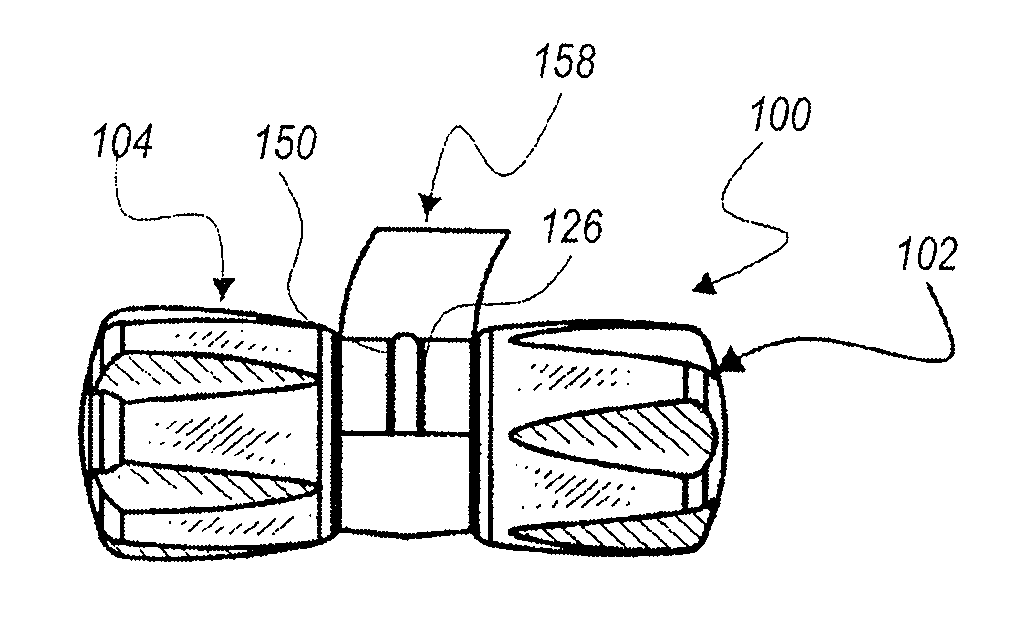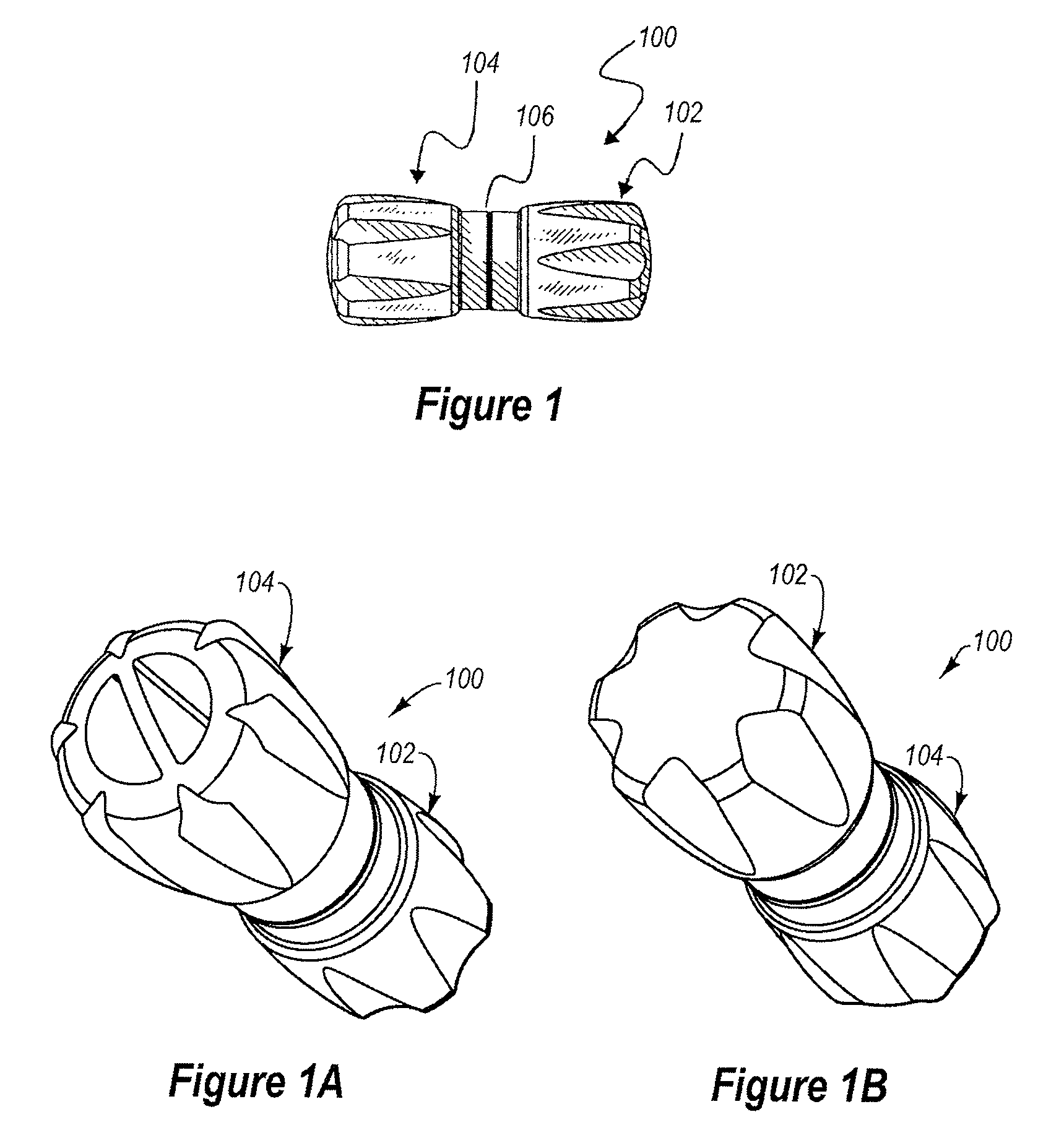Methods for cleaning luer connectors
a technology of connectors and connectors, applied in the field of connectors for medical devices, can solve the problems of catheter-related bloodstream infections, up to 20,000 deaths per year, and inability to clean connectors, so as to reduce or prevent the loss of antiseptics, reduce fluid loss, and ensure sterility.
- Summary
- Abstract
- Description
- Claims
- Application Information
AI Technical Summary
Benefits of technology
Problems solved by technology
Method used
Image
Examples
Embodiment Construction
[0058]The present invention relates generally to a pair of nestable caps, each of the caps being sized and shaped to provide a protective union about a separated medical connector. The pair comprises a male cap and a female cap, each of which is configured to be adjoined to a complimentary cap to form a nested pair. The nested pair is sealed until separated for use, thereby maintaining sterility of the internal surfaces of the nested pair. One of the caps may have a fluid chamber joined thereto filled with medicine or antiseptic. The cap associated with the fluid chamber can have a channel extending therethrough to provide fluid communication between the fluid chamber and a fluid pathway. The fluid chamber can be adapted to diffuse the fluid into the fluid pathway over time, or the fluid chamber can be adapted to dispense the fluid out of the fluid chamber.
[0059]Seen in FIGS. 1-1B, is a unit or assembly 100 of a pair of separable caps 102 and 104 securely, but releasably affixed one...
PUM
| Property | Measurement | Unit |
|---|---|---|
| circumference | aaaaa | aaaaa |
| outer circumference | aaaaa | aaaaa |
| resistance | aaaaa | aaaaa |
Abstract
Description
Claims
Application Information
 Login to View More
Login to View More - R&D
- Intellectual Property
- Life Sciences
- Materials
- Tech Scout
- Unparalleled Data Quality
- Higher Quality Content
- 60% Fewer Hallucinations
Browse by: Latest US Patents, China's latest patents, Technical Efficacy Thesaurus, Application Domain, Technology Topic, Popular Technical Reports.
© 2025 PatSnap. All rights reserved.Legal|Privacy policy|Modern Slavery Act Transparency Statement|Sitemap|About US| Contact US: help@patsnap.com



